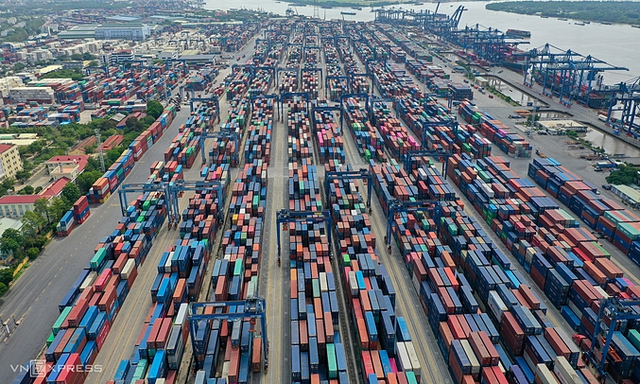HSBC forecasts Viet Nam’s economic growth at 5.2% in 2023
VGP - HSBC expects the services sector to receive a punchier boost and the trade tide to turn in the second quarter, lifting Viet Nam’s whole-year growth to 5.2% in 2023.

Illustration photo
The bank recently published a report saying that external weakness has dampened Viet Nam’s growth.
After falling 12 percent year-on-year in the first quarter this year, exports continued their double-digit decline, falling 11.7 percent year-on-year in April.
HSBC said that the weakness continued to be broad-based, with key shipments such as textiles, footwear, smartphones and wooden furniture saw notable slumps.
However, the only bright spot in April’s data was computer electronics, rising 5.4% year-on-year. That said, this was a one-off surprise due to base effects, rather than a reflection of the tech cycle bottoming out.
While leading indicators such as PMI showed some initial signs of stabilization, it will still take some time until there is a meaningful rebound in the global electronics cycle. Viet Nam is clearly not alone in this while peers such as Taiwan and the Republic of Korea also continue to struggle in the current electronics doldrums.
Despite weakness in goods trade, services continue to provide some much-needed support. International tourist arrivals moved closer to one million in April, driven by a 70 percent month-on-month pick-up in Chinese tourists.
The positive recovery is thanks to easing flight constraints and China’s inclusion of Viet Nam as a destination for its group tour resumption in mid-March.
However, as a major tourist source with 30 percent share prior to the pandemic, the recovery pace of Chinese tourists remains gradual, reaching only 25 percent of the same period in 2019. For example, Korean tourists, another major source, have recovered to 77 percent.
While tourism can provide some partial support, its recovery will only be a slow process, and will not be enough to offset this year’s challenges. Growth headwinds can be seen through the lens of extremely sluggish credit growth.
Despite an annual credit growth target of 14-15 percent and two moves by the State Bank of Viet Nam (SBV) to cut its key interest rates in March, loans only grew around 2 percent by mid-April, half of the growth of the same period in 2022, reflecting ongoing concerns of economic difficulties./.
